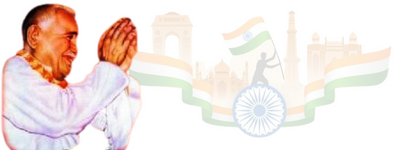Department of Statistics
About Department
About Department : Statistics department always intends to equip rural students to face challenges of the changing scenario at local and global level.To acquaint the students with basic concepts, to enable the students to acquire basic skills Statistics, to convey carrier opportunities in Statistics, to arrange personality development and interpersonal skills activities for the students of the department and to imbibe human and democratic values among the students etc. are objectives of Statistics department. The department has been established with the commitment of the college with the courses. At present the department runs optional courses for B. Com.- part II and B.Sc. part- I and II. The mission is to run courses in Statistics prescribed by Shivaji University, Kolhapur, to provide remedial coaching to the students of socially weaker sections of the society and to provide facilities of job oriented short term courses in Statistics.
| Photo | Name | Qualification | Designation | Date of Appointment | Resume |
|---|---|---|---|---|---|
 |
Dr. Dhumal B.R. | M. Sc., Ph. D. | Assistant Professor | 18/7/1994 | View |
B. Sc.:- Statistics [ B. Sc. I and II ] B. Com.:- Statistics[ B. Com. II ]
Course Outcomes: B.Sc.Statistics
The following outcomes have been achieved:-
Paper 1DSC – 7A DESCRIPTIVE STATISTICS – I
CO1: The students are able to understand some basic concepts in Statistics.
CO2: The students are able to compute various measures of central tendencies, dispersion, moments, skewness and kurtosis.
CO3: They are able to analyze data pertaining to attributes and to interpret the results to think critically and logically.
Paper 2DSC – 8AELEMENTARY PROBABILITY THEORY
The students are able to understand some basic concepts in probability viz.
CO1:To distinguish between random and non-random experiments.
CO2: To find the probabilities of various events.
CO3: To understand concept of conditional probability and independence of events
Paper 3DSC – 7B DESCRIPTIVE STATISTICS – II
The students are able to understand some basic concepts in statistics, viz
CO1:To compute correlation coefficient, interpret its value.
CO2:To compute regression coefficient, interpret its value and use in regression analysis.
CO3:To compute various index numbers.
Paper 4DSC – 8B -DISCRETE PROBABILITY DISTRIBUTIONS
The students are able to understand some basic concepts of random variable and
discrete probability distribution, viz.
CO1:To apply discrete probability distributions studied in this course in different situations.
CO2:Distinguish between discrete variables and study of their distributions.
CO3: Know some standard discrete probability distributions with real life situations.
CO4: Understand concept of bivariate distributions and computation of related probabilities.
Paper 5: Probability Distributions-I
The students are able to understand some concepts of,
CO1:Standard discrete distribution defined on countably infinite sample space, viz.Poisson, Geometric and Negative Binomial Distribution.
CO2:Continuous univariate random variable.
CO3:Continuous bivariate random variable.
CO4:Transformation of continuous univariate random variable.
· CO5:Transformation of continuous bivariate random variable.
Paper 6 Paper VI: Statistical Methods-I
The students are able to apply the statistical tools in the applied fields, viz,
CO1:Multiple Linear Regression
CO2:Multiple and Partial Correlation
CO3:Demography
CO4:Sampling Theory
Paper 7 Probability Distributions-II
The students are able to understand some concepts of, Standard continuous distribution defined on un-countably infinite sample space, viz.
CO1: Uniform and Exponential Distributions
CO2: Gamma and Beta Distributions
CO3: Normal distribution
CO4:Chi-Square distribution
CO5: Student’s t- distribution
CO6: Snedecor’s F distribution
Paper 8 Paper VIII: Statistical Methods-II
The students are able to apply the statistical tools in the applied fields, viz,
CO1: Time Series Analysis
CO2: Statistical Quality Control
CO3:Testing of Hypothesis
CO4: Exact sample Tests
Practical’s:
Paper-I
At the end of this course students are able-
CO1: To represent statistical data diagrammatically and graphically.
CO2:To compute various measures of central tendency, dispersion, moments, skewness and kurtosis.
CO3:To compute correlation coefficient, regression coefficients.
CO4:To understand Consistency, Association and Independence of Attributes.
CO5:To interpret summary Statistics of computer output.
CO6:To know applications of some standard discrete probability distributions.
CO7:To compute the index numbers.
Paper-II
At the end of this course students are able-
CO1:To fit probability distributions and to test goodness-of-fit viz. Discrete Uniform, Binomial, Hypergeometric,Poisson, Geometric,Negative Binomial, Continuous Uniform, Exponential and Normal distribution.
CO2:To draw a random sample from Discrete Uniform, Binomial, Hypergeometric,Poisson, Geometric,Negative Binomial, Continuous Uniform, Exponential and Normal distribution.
CO3:To apply Binomial, Hypergeometric, Poisson, Geometric, Negative Binomial, Continuous Uniform, Exponential and Normal distribution to real life data or simulated data.
Practical 3
At the end of this course students are able-
CO1:To fit straight line and curves of type, second degree, Y = a.b X, Y = aXb and Y = aebX
CO2:To fit and analyse Time Series data (methods of measuring trend and seasonal indices).
CO3:To construct and R charts, np and c charts.
CO4:To compute mortality rates, fertility and Reproduction rates
CO5:To apply statistical tests viz, Large sample tests for means, tests for proportions, tests for population correlation coefficients, test for population variance, Test for goodness of fit, tests for independence.
CO6:To apply statistical tests viz, tests based on t distribution (µ = µ 0, µ1 = µ2; paired t-test), Tests based on F distribution. (σ1= σ2),
CO7:To use MS-EXCEL for computation of above practical’s.
Programme’s Specific Outcomes
B.Sc. Statistics
PSO1: Serve as Statistician with sound theoretical, practical & computational skill.
PSO2: Work as researcher for formulation & solution of mathematical, scientific, social & industrial problem.
PSO3: Understand the role of statistics in science, society & for National Development.
PSO4: Apply some discrete & continuous probability distribution which are highly useful in modeling real life uncertainties.
PSO5: Investigate the relationship between a variable of interest (the response) & a set of related predictor variable & formulate & fit the appropriate regression model to the given dataset.
Programme’s Outcomes
B.Sc . Statistics
PO1: To understand distinguish between random &non-random experiment
PO2: To apply discrete Probability Distribution studied in the course in different situations.
PO3: Students should know concept of time series. SQC, demography
PO4:.To understand concept of estimation and testing theory.
PO5:.Apply knowledge to solve simple tasks using computer (MS Excel)
| Sr.No | Date | Event/Activity Name | Report |
|---|

